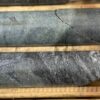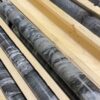Murchison Minerals Expands BDF Zone Along Strike; Intersects Massive Sulphide Near Surface with 20.42 m Estimated at 1.27% pXRF NiEq or 3.78% pXRF CuEq Including 4.66 m Estimated at 2.93% pXRF NiEq or 8.72% pXRF CuEq
October 17th, 2022 (Burlington, Ontario): Murchison Minerals Ltd. (“Murchison” or the “Company”) (TSXV: MUR | OTCQB: MURMF) is pleased to announce results analysed using portable x-ray fluorescence (pXRF) from the final three diamond drillholes, at the Barre de Fer (“BDF”) Zone, as part of the 2022 Summer Exploration Program on the 100% - owned HPM (Haut-Plateau de la Manicouagan) Project, located in Quebec.
The drillholes from today’s release successfully tested for mineralization along strike to the north and south of the Barre de Fer (BDF) Zone, intersecting shallow high-grade nickel-sulphide mineralization and extending the overall strike length of known mineralization to 370 m. The results further demonstrate that the BDF Zone remains open and unconstrained, along strike, and at depth. Future drilling will continue to focus on systematically expanding and delineating the BDF Zone. The Company intends to produce a maiden resource for the BDF Zone in early 2023.
It should be noted that pXRF results provide only an indication of the amount of Ni, Cu, and Co present, certified assaying of the core samples is still required to accurately determine the amount of mineralization (Nickel-Copper-Cobalt). The Company has implemented rigorous QA/QC procedures utilizing a direct rock sampler (Figure 5) to produce reasonably representative preliminary results (see pXRF Sample Procedures and QA/QC below).
Highlights
- BDF22-010 extended mineralization ~45 m along strike to the South of the BDF Zone and BDF22-008 extended mineralization ~75 m along strike to the North
- The results to date have successfully expanded the preliminary model, the current dimensions of the BDF Zone are:
- Mineralization at depth has now been extended down to 475 m, versus the preliminary model at 295 m
- Along strike, the zone of mineralization has been extended from 315 m to 370 m
- Mineralization was expanded along the width of the mineralized zone from 150 m to 200 m, with individual lenses now modelled up to 48 m in thickness, compared to the 28 m in the preliminary version
- BDF22-010 intersected multiple strong intervals of mineralization including:
- o 20.42 m estimated at 1.27% pXRF NiEq or 3.78% pXRF CuEq (between 29.21 and 49.63 m)
- including 4.66 m estimated at 2.93% pXRF NiEq or 8.72 CuEq (between 41.34 m and 46.0 m)
- o 7.59 m estimated at 1.68% pXRF NiEq or 5.02% pXRF CuEq (between 56.41 to 64.0 m)
- including 4.03 m estimated at 2.98% pXRF NiEq or 8.88% pXRF CuEq (between 56.41 to 60.44 m)
- o 20.42 m estimated at 1.27% pXRF NiEq or 3.78% pXRF CuEq (between 29.21 and 49.63 m)
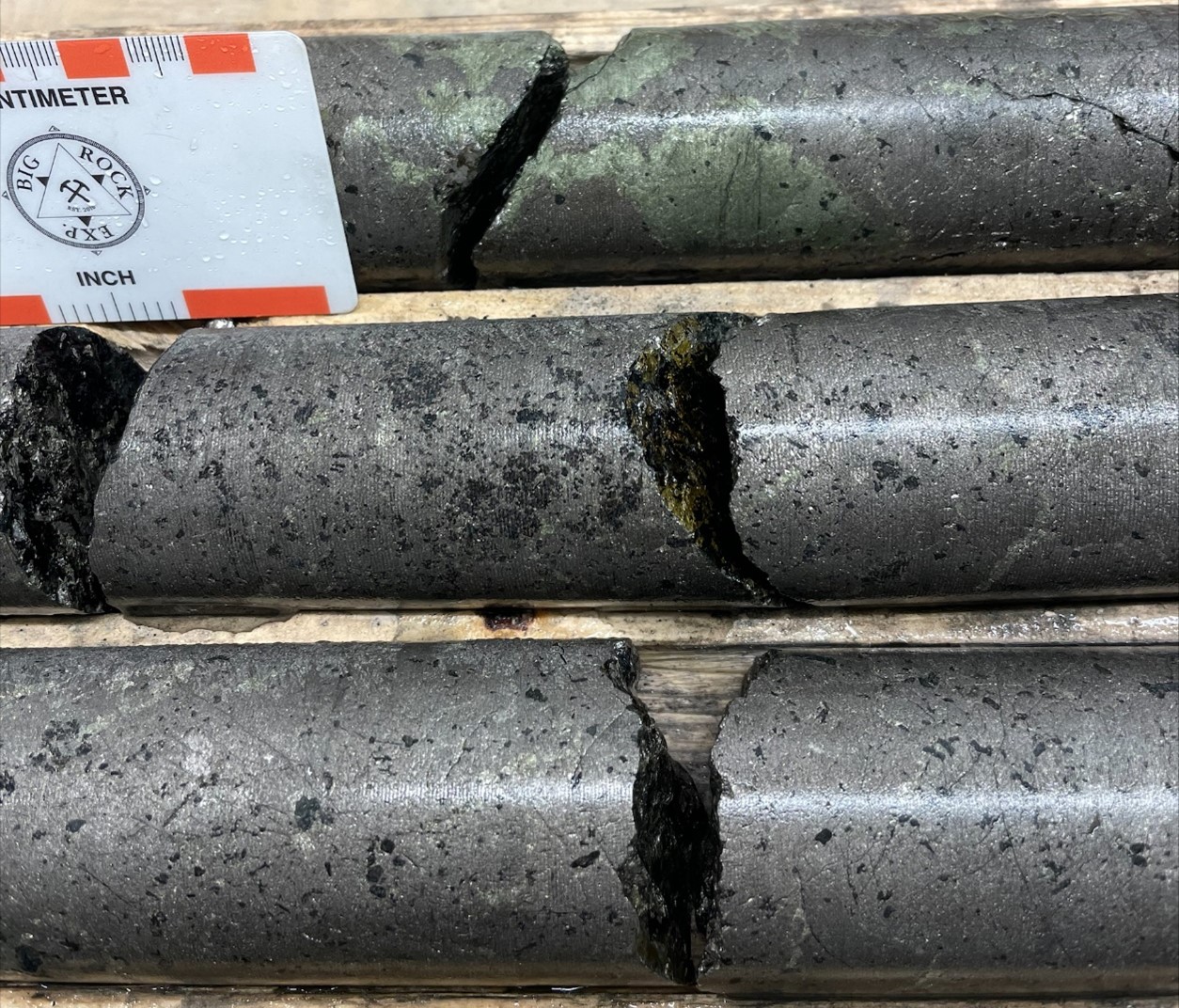
Figure 1: Close-up of massive sulphide mineralization in BDF22-010 displaying pentlandite and chalcopyrite mineralization.
”“The Company is extremely excited about the overall results from our first diamond drill program at Barre de Fer. The drilling Phase of the 2022 Summer Exploration program was designed to expand and delineate the zone of mineralization at BDF, in support of the upcoming maiden resource. The technical team – using a systematic geoscience first approach – achieved all objectives, and the preliminary results have exceeded our expectations. Today’s results show that we’ve greatly expanded known mineralization at BDF, yet the Zone remains open and unconstrainted. They also continue to demonstrate the fact the Company is just scratching the surface at HPM. When you’re exploring a 648 km2 package land package, with advanced existing infrastructure, and you’re seeing results like these in our first program – it’s why we are confident in calling HPM an emerging nickel district. With the state of play in the Class I nickel space, people should take notice of HPM.”
Troy BoisjoliMurchison Minerals President and CEO
”“Murchison’s first drill campaign at BDF is a significant milestone and has greatly exceeded our expectations. The drill campaign has demonstrated clearly to the technical team the impressive scale of the sulphide mineralizing system. Today’s results have successfully extended the Zone along strike and confirm it remains open. The results from hole BDF22-010 are great and considering the intercept is at the southernmost point of the modelled Zone, it has us excited for the potential immediately south of the Zone for further expansion.”
John ShmyrMurchison Minerals Vice-President of Exploration
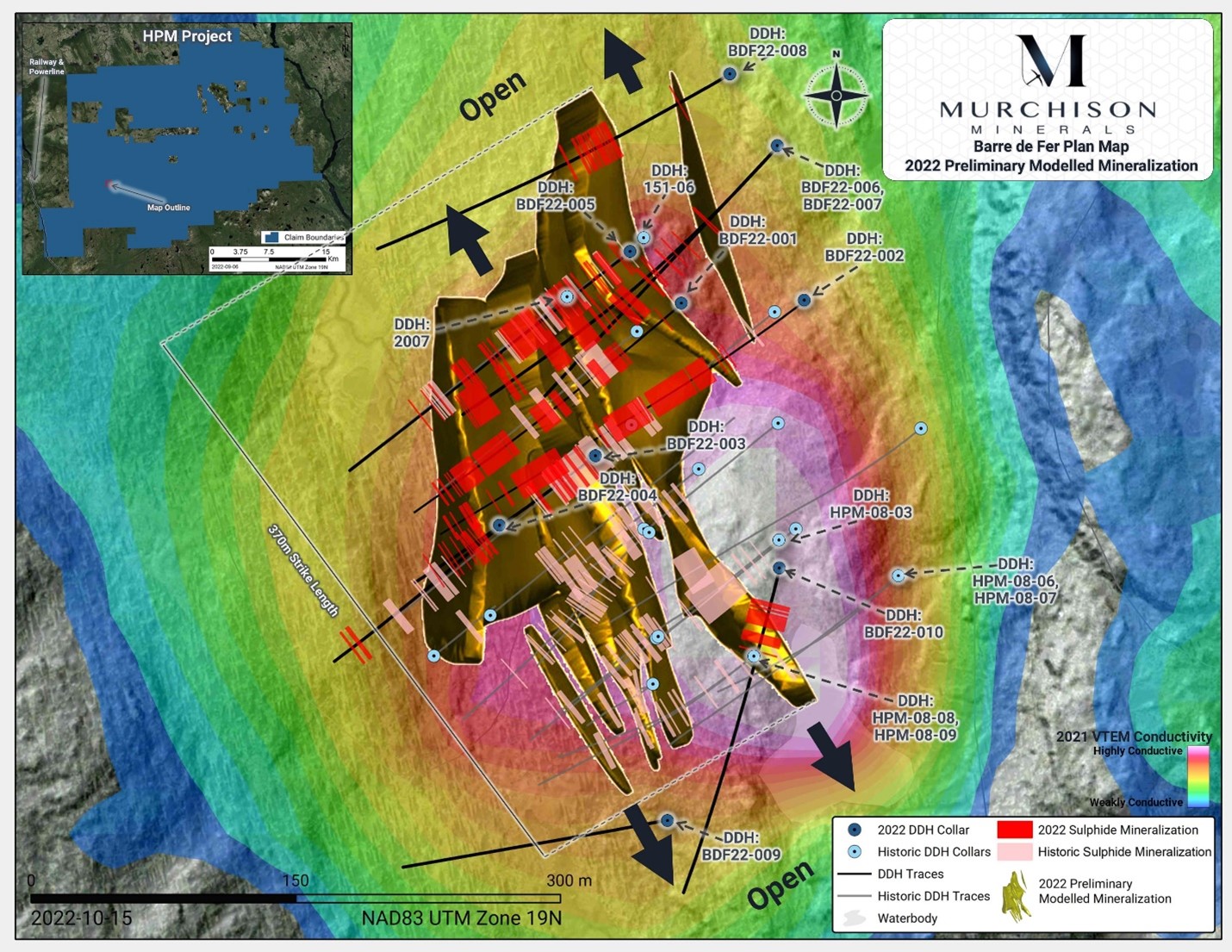
Figure 2: Location map of Barre de Fer looking down, showing drill holes BDF22-001 to BDF22-010 with the updated preliminary 2022 mineralized Ni model.
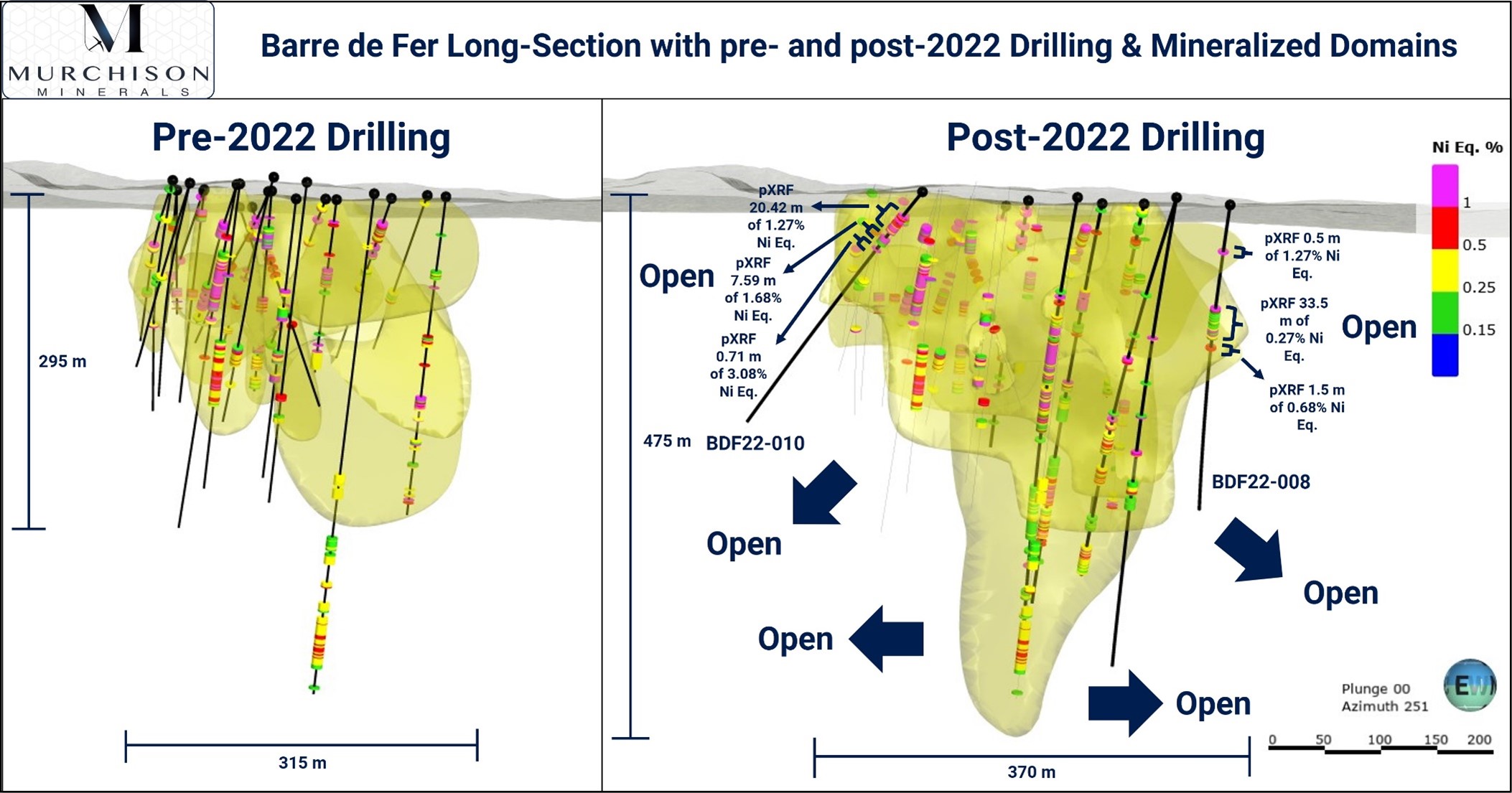
Figure 3: Long Section View of the Barre de Fer Zone mineral zone looking South-west showing the previous model (left) and updated model (right) of the nickel mineralization domains and pXRF results from BDF22-008, and BDF22-010, 2022 drill holes highlighted in black on the right.
Table 1: BDF22-008, & 010 pXRF Highlighted Results
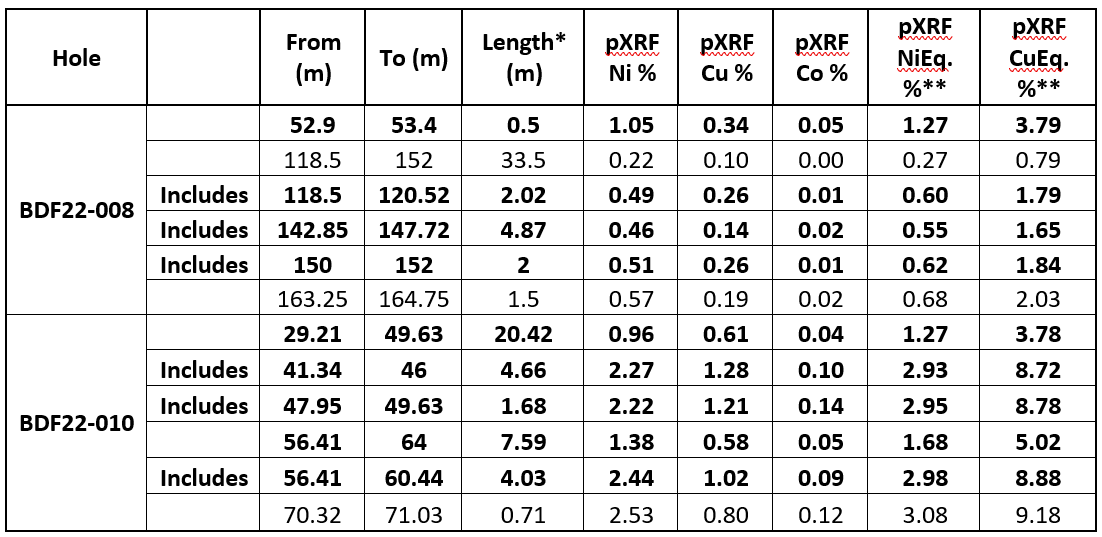
Table 1: * Reported as core length, true thickness is not known. **Nickel Equivalent (NiEq) & Copper Equivalent (CuEq) values were calculated using the following USD metal prices from Oct 7, 2022: $10.145/lb Nickel, $3.4067/lb Copper, and $23.566/lb Cobalt. NiEq.% was calculated using Ni%+((Cu Price/Ni Price) *Cu %)+((Co Price/Ni Price) *Co %). CuEq.% was calculated using Cu%+((Ni Price/Cu Price)* Ni %)+((Co Price/Cu Price)*Co %).
BDF Mineralization and 2022 Delineation Drillhole Results
The mineralization observed at BDF occurs predominantly as two different types: i) Meter to multi-metre intervals of massive and brecciated sulphide within zones of stringer and disseminated sulphide mineralization, hosted in gabbronorite and peridotite, ii) Disseminated sulphide with lesser stringer to net sulphide, over broad intervals, hosted within an olivine gabbronorite. The sulphide mineralization consists of pyrrhotite with granular pentlandite and stringer chalcopyrite, or as chalcopyrite loops with pentlandite within massive pyrrhotite.
Hole BDF22-008 was drilled to a depth of 350 m and was designed to test for sulphide mineralization along strike to the North of the modelled zone of mineralization at BDF. The hole intersected a significant 33.5 m interval of mineralization, extending the zone 75 m to the north.
BDF22-010 was drilled to a depth of 280 m and was designed to test for sulphide mineralization along strike to the south of preliminary model at BDF. The drillhole was oriented at an oblique azimuth to avoid a shallow pond. BDF22-010 intersected significant massive and semi-massive mineralization at a shallow depth, and extended mineralization intersected in HPM-08-003, 45 m along strike to the south.
Hole BDF22-009 was drilled to a depth of 221 m and was designed to test an adjacent airborne EM anomaly south of BDF. The drillhole did not intersect the geophysical anomaly. It is inferred that the geophysical target is either beneath the shallow drilled hole or immediately east behind the hole and remains prospective.
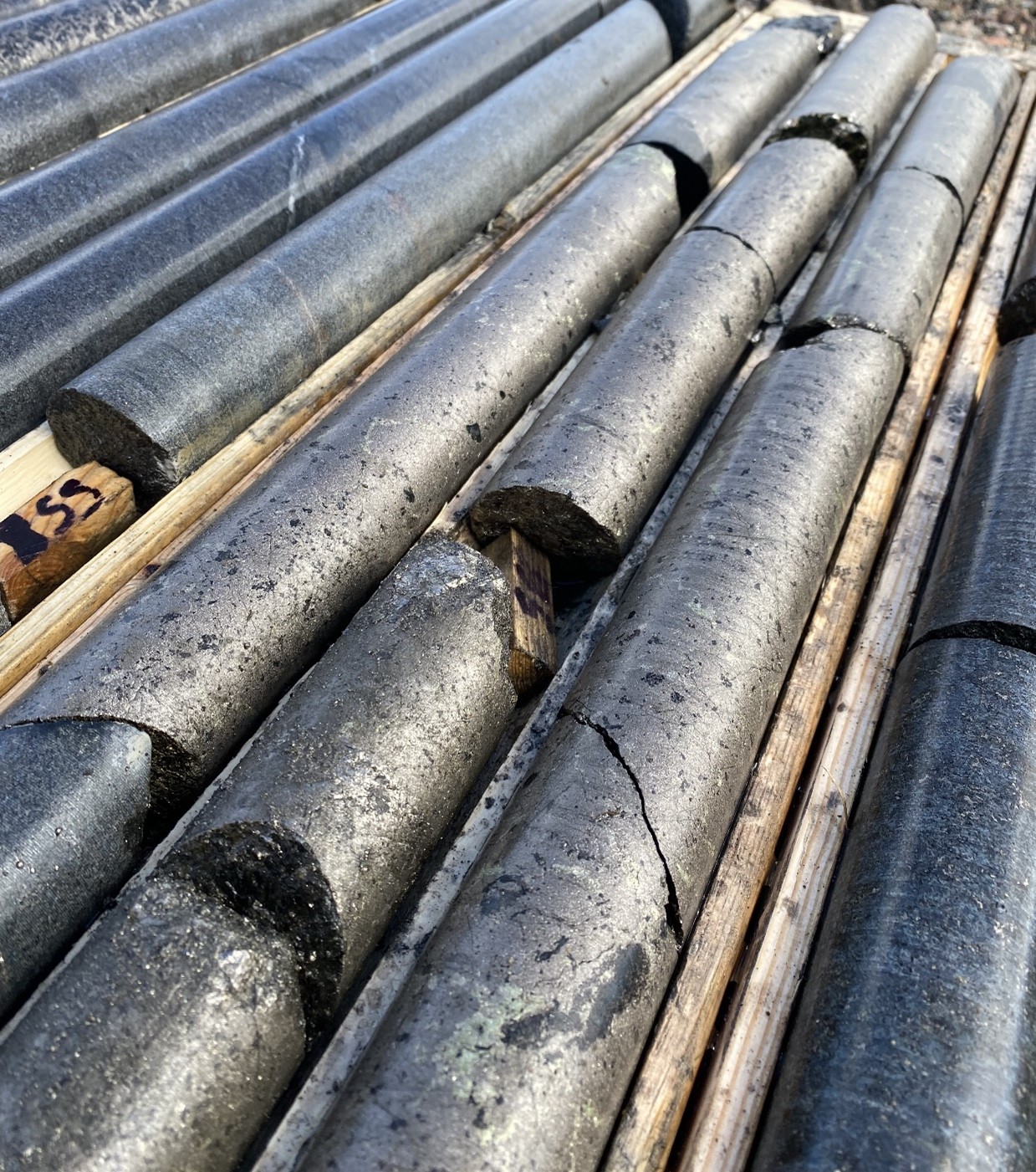
Figure 4: Massive sulphide mineralization in BDF22-010 at 56.41 m to 60.44 m.
Table 2: Drill Hole Information

Table 2: *UTM Projected Coordinate System: NAD83 UTM Zone 19N
2022 Summer Diamond Drilling
During the 2022 summer exploration program, a total of 13 diamond drill holes were completed, comprising 4,316 metres. This includes ten drillholes at BDF, and an additional three holes at Syrah. The drill core processing has now concluded, and all pXRF analyzed samples have also been submitted to the Saskatchewan Research Council’s Geoanalytical Laboratory for commercial certified assaying, results are pending. The Company is expecting final lab assay results in the coming weeks and will release final assay results once the data becomes available.
The three remaining holes from the drilling Phase of the 2022 Summer Exploration Program were drilled at the Syrah Target. The Company reserved DRS sampling for BDF, prioritizing the development of a mineralized model. For this reason, no DRS samples were taken at Syrah, however, samples were submitted for assay analysis at SRC, and the Company expects to receive results in the coming weeks.
Table 3: 2022 Drill Campaign pXRF Results to date
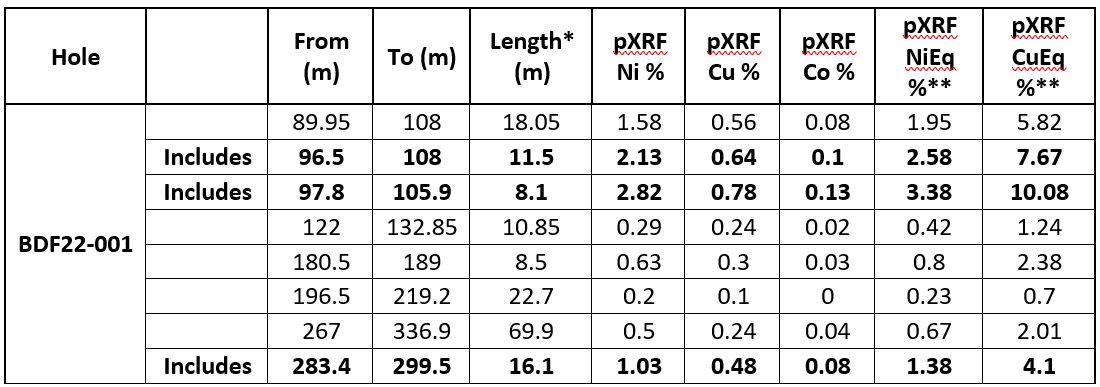
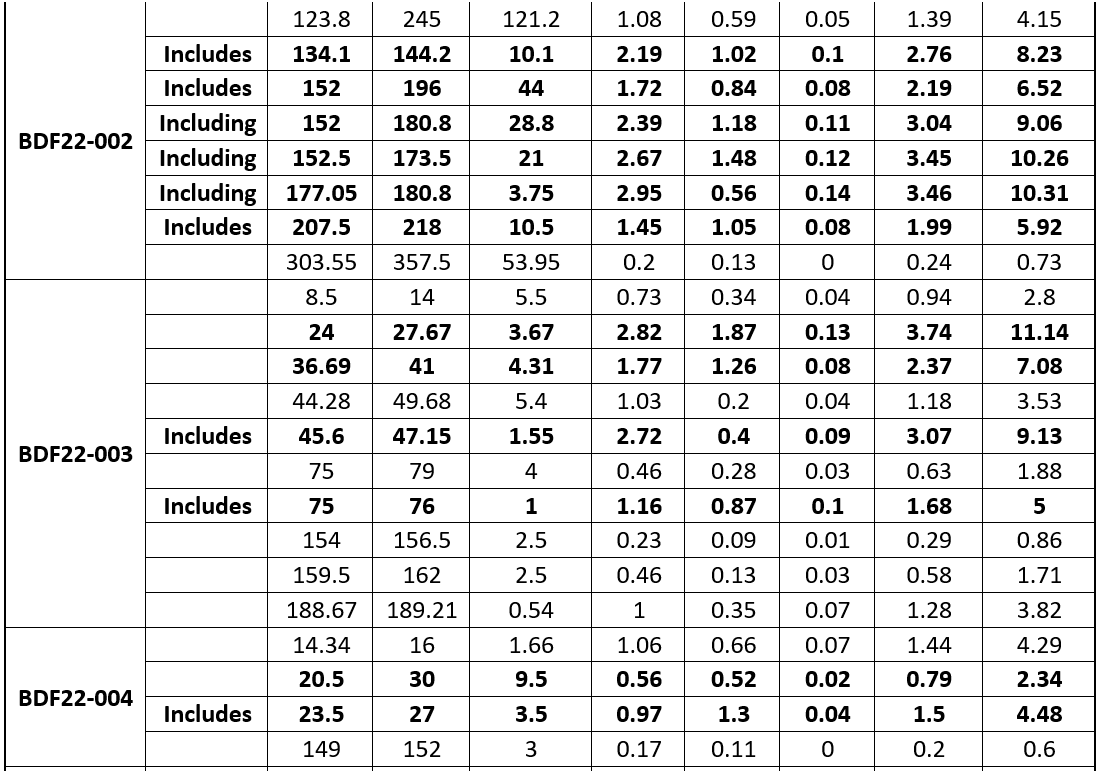
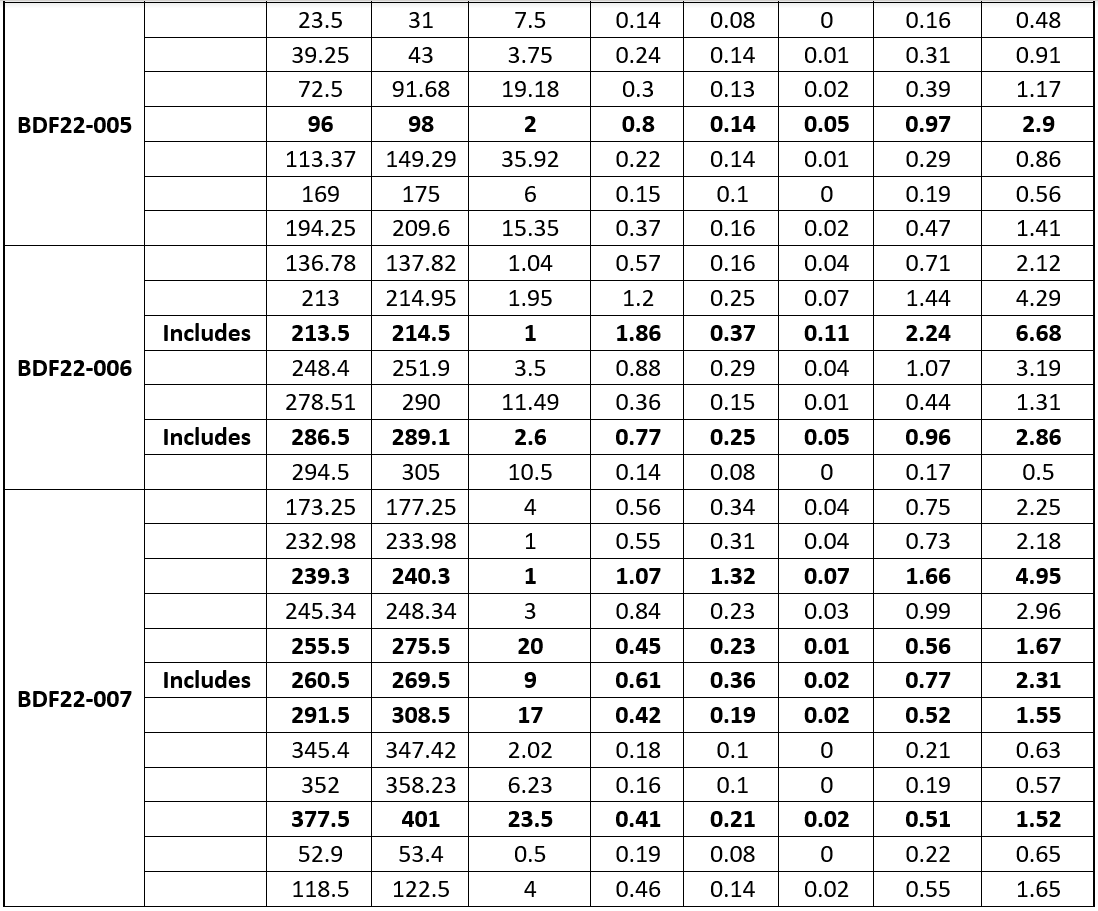
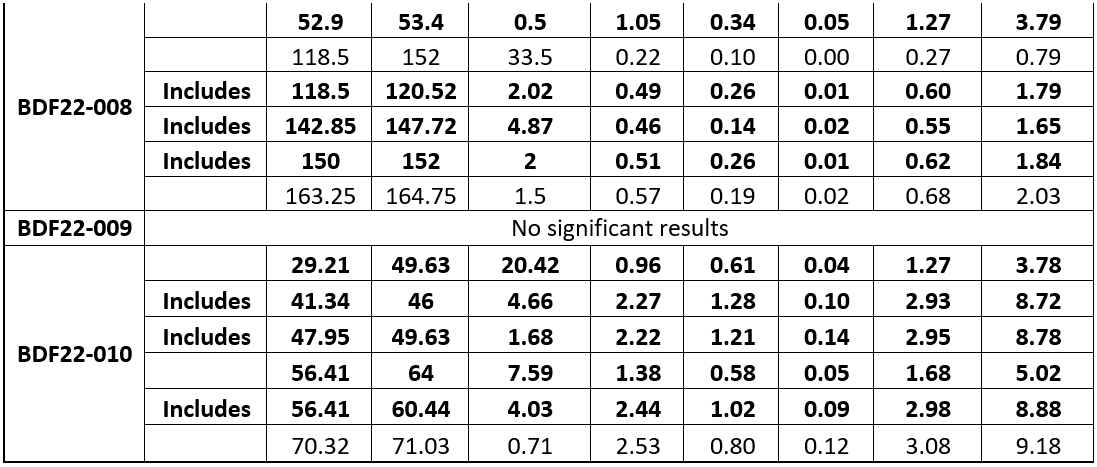
Table 3:* Reported as core length, true thickness is not known. **Nickel Equivalent (NiEq) & Copper Equivalent (CuEq) values were calculated using the following USD metal prices from Oct 7, 2022: $10.145/lb Nickel, $3.4067/lb Copper, and $23.566/lb Cobalt. Holes BDF22-001 and BDF22-002 used prices from the following USD metal prices from Sept 12, 2022: $10.84/lb Nickel, $3.63/lb Copper, and $23.56/lb Cobalt. NiEq.% was calculated using Ni%+((Cu Price/Ni Price) *Cu %)+((Co Price/Ni Price) *Co %). CuEq.% was calculated using Cu%+((Ni Price/Cu Price)* Ni %)+((Co Price/Cu Price)*Co %)
pXRF Sample Procedures and QA/QC
Murchison has implemented a rigorous pXRF sampling and analysis procedure to support the estimation of Ni, Cu and Co concentrations.
In order to collect a homogenous sample, a direct rock sampler (DRS) was utilized for all samples (Figure 5). The DRS consists of a modified angler grinder utilizing a diamond blade in which the rock cuttings are collected within a plastic vial. DRS sampling was undertaken from each core interval that is to be submitted to a commercial laboratory for analyses by total digestion ICP-OES and gold platinum palladium by fire assay. The DRS was used to channel the entire length of each sample with a single pass at a uniform depth of 3 mm and was cut without water. Each channel was cut parallel to core axis; adjacent DRS samples were cut along a uniform plane with consistent relative beta rotation angles to the orientation line, irrespective of the minerals to be intersected. The collected powder is pressed into a small puck with a very thin plastic film overtop and labelled with its unique identifying number. Between each sample all equipment was thoroughly cleaned to prevent cross-contamination. The sample pucks represent a continuous sample across the length of the mineralized intervals. The DRS channel sample collects a limited amount of material for analysis through typically course-grained assemblages of sulphide that can create nugget effects. Where coarse grained material is present, individual pXRF results may be different from the total digestion ICP-OES results. The nugget effect however is buffered by the significant quantity of samples that compose each composite interval since some samples will report low and others high as compared to lab assays.
Each sample puck was analyzed using a Niton XL5 XRF analyzer mounted in a test stand. The samples were analyzed for 90 seconds utilizing 3 element filters, each filter configured for a 30 second analysis. For every 10 samples analyzed, a standard was analyzed consisting of certified reference material that was pressed into a sample puck. Five standards were utilized, and the analyzed standard was selected based on the relative nickel grade of the previous samples in order to analyze a standard with comparable metal grade to the unknown. Multiple blank samples were also prepared by sampling barren quartz hand samples and pressing the material into sample pucks. Regular analysis of the blank material indicates minimal issues regarding sample contamination caused by the diamond blade. Each sample is thus assigned a pXRF Ni, Cu, and Co value which will then be superseded by lab quality assay results when they are received.
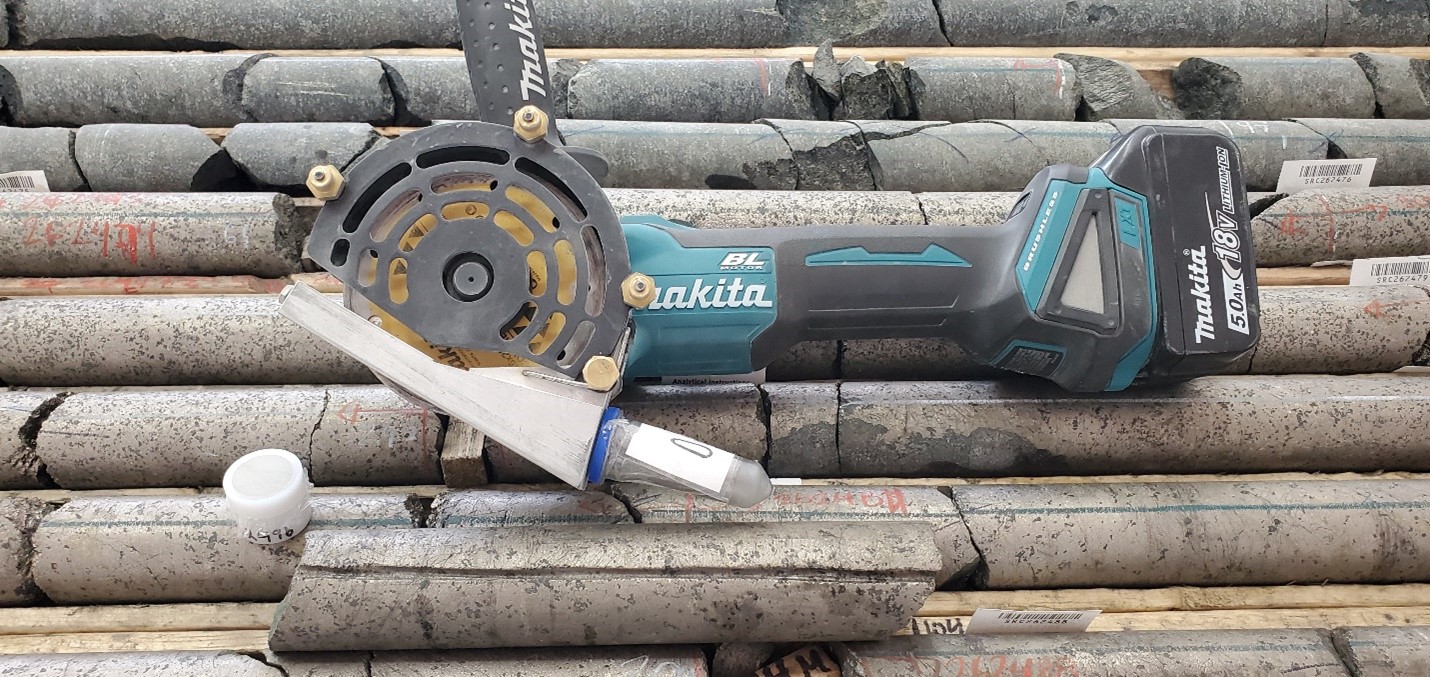
Figure 5: Direct rock sampler, sampled core and example sample puck from BDF22-001.
Table 4: Comparitive Table of Average XRF Results vs Standards

Table 5: Example XRF analysis of Blank Material

About HPM Project
The HPM Project is located within the Haut-Plateau de la Manicouagan area, east of the Manicouagan structure, the site of a major 215 Ma impact event. The extensive reservoir at Manicouagan supports five hydro-power plants. The existing Quebec Cartier rail line, located within the HPM Project area, links Labrador City to Port Cartier and Sept Iles, two major iron ore port facilities.
The claims host prospective gabbroic, ultramafic and anorthositic bodies within the Manicouagan metamorphic complex and are associated with significant nickel-copper-cobalt sulphide mineralization first identified by Falconbridge in 1999, where they discovered extensive nickel-bearing sulphide mineralization at BDF during drilling in 2001 – 2002. Murchison Minerals Ltd.’s predecessor – Manicouagan Minerals – drilled in the area in 2008 and 2009. The majority of the past drilling at the HPM Project targeted the BDF geophysical conductor and confirmed the presence of nickel-copper-cobalt sulphide mineralization over approximately 300-metres strike length to a depth of 295 metres. The mineralization remains open at depth and partially along strike.
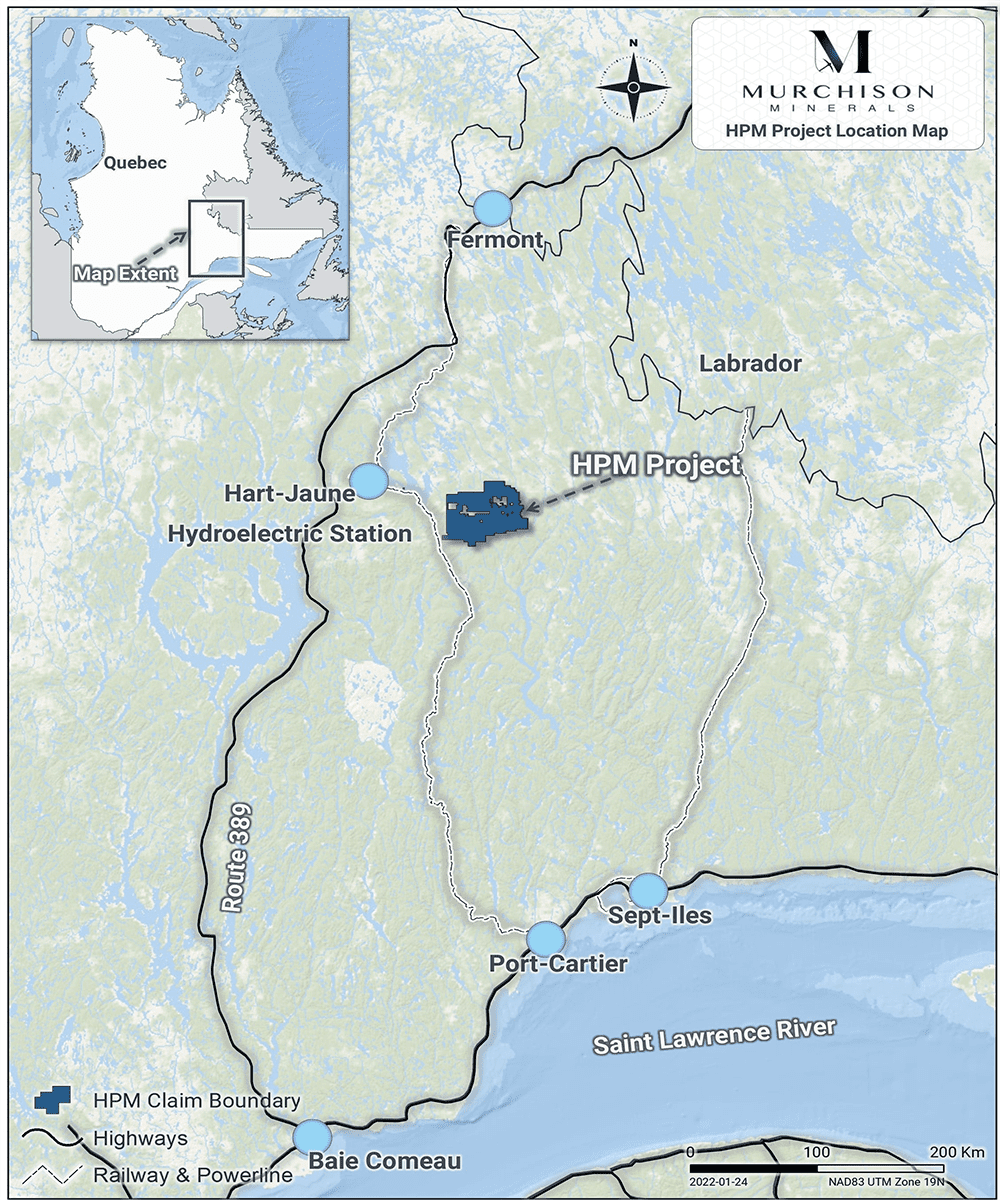
Figure 7: HPM Location Map.
In March of 2022, the Company completed a comprehensive data compilation, verification and modelling program, comprising all previous drill hole data from the BDF Zone. The modelling program consisted of developing a preliminary 3D interpretation of nickel mineralization at BDF. Based on the modelling, the Zone outcrops on surface, extends to a vertical depth of 295 m, has a strike length of 315 m, and is composed of multiple stacked lenses over a maximum footprint width of 150 m. Individual lenses have a maximum thickness of 28 m. During the 2022 Summer Exploration Program, diamond drilling focused on the expansion and delineation of mineralization at BDF. Those results are currently being evaluated and the Preliminary model will be updated as results become available. No resource estimates have been completed on the Zone to date.
After Murchison acquired 100% ownership of the property in 2019, the Company focused exploration work on the camp-scale potential of the region. Aerial EM surveys completed in the spring of 2021 identified more than 50 anomalous conductors. Prospecting crews were able to traverse three (3) of the more than 50 anomalies, and discovered new outcrops of nickel-bearing sulphide mineralization in the process. The prospecting program was followed by an inaugural drill program at the PYC Target area – an EM anomaly with a 1.95-km strike length. Subsequent to the completion of the drill program at PYC, the Company increased its dominant land position in the Haut-Plateau region from 139 km2 to 576 km2. Finally, as a result of the spring 2022 VTEM survey, completed over the remaining 85% of the HPM property area, the Company further increase its land holdings at HPM to 648 km2.
Qualifying Statement
The foregoing scientific and technical disclosures on the HPM Project have been reviewed by John Shmyr, P.Geo., VP Exploration, a registered member of the Professional Engineers and Geoscientists of Saskatchewan and current holder of a special authorization with the Ordre des Géologues du Québec. Mr. Shmyr is a Qualified Person as defined by National Instrument 43-101. The Qualified Person has verified the data disclosed in this release, including sampling, analytical and test data underlying the information contained in this release. Mr. Shmyr consents to the inclusion in the announcement of the matters based on his information in the form and context in which it appears.
Some data disclosed in this News Release relating to sampling and drilling results is historical in nature. Neither the Company nor a qualified person has yet verified this data and therefore investors should not place undue reliance on such data. In some cases, the data may be unverifiable due to lack of drill core. Mineralization hosted on adjacent and/or nearby and/or geologically similar properties is not necessarily indicative of mineralization hosted on the Company’s properties.
About Murchison Minerals Ltd.
(TSXV: MUR, OTCQB: MURMF)
Murchison is a Canadian‐based exploration company focused on nickel-copper-cobalt exploration at the 100% – owned HPM Project in Quebec and the exploration and development of the 100% – owned Brabant Lake zinc‐copper‐silver project in north‐central Saskatchewan. The Company also holds an option to earn 100% interest in the Barraute VMS exploration project also located in Quebec, north of Val d’Or.

